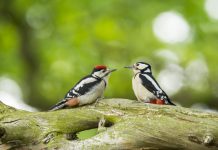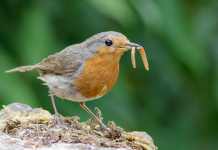
We’re into a fresh new year, and as we start to look ahead to spring, now is the time to start preparing our gardens for returning wildlife. If you’re looking to encourage nesting birds, butterflies, bees and hedgehogs into your garden this year, we’ve put together some advice to help you draw as much wildlife into your garden as possible.
Water
Whether it’s a small pond for frogs and newts to build their habitat in and for small mammals to drink from, or a bird bath for your feathered friends to refresh and cool down in, any wildlife garden isn’t complete without water. Putting these additions into your garden now will not only provide our winter residents with a source of water, but is sure to entice returning wildlife into your garden this spring as well.
Safe spaces
Spring means breeding season for birds, and if you would like to provide a safe space for your feathered friends to raise their brood in, we would recommend hanging up a nesting box or two. Available in a multitude of shapes and sizes to fit every bird’s needs, they are best placed in a sheltered location facing North or North-East as this will prevent your flying visitors from getting too hot on a sunny day. If you’re planning on placing your nesting box on a tree, make sure there is no foliage covering the entrance hole.
You can also provide a safe space for hedgehogs to raise their young with a hedgehog house. Built in predator baffle guards can help to keep hedgehogs safe from foxes and badgers, and popping one in a sheltered location away from direct sunlight and winds will also provide a safe space for hibernation over the winter months.
Planting
When it come to encouraging bees, butterflies and other pollinating insects into your garden, it’s crucial that you have got the right plants they are looking for. A wild flower meadow is a great option, and it’s remarkably easy to maintain year on year. Wild flower meadows can also provide some excellent materials for nesting birds, as well as vital cover for small mammals.
Food and feeders
Raising a brood takes up a lot of energy, and it’s vital for the parent birds to keep their own energy stores up as they fly around collecting food for their young. A good bird table or feeder will provide a reliable place for your feathered friends to stop for a quick nibble, and filling it with foods such as suet pellets, peanuts and mealworms will help keep energy levels up.
Apartments and smaller spaces
If you live in an apartment or have a smaller garden, there are still things you can do to help wildlife this spring. A hanging water feeder is a great option if you don’t have any room for a bird bath or pond, and a window feeder can provide an excellent place to stop for a quick snack, as well as giving you a front-row seat for a closer view of some beautiful birds.

























